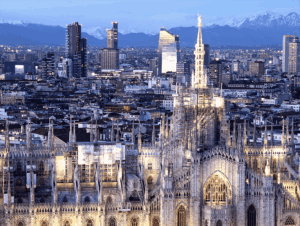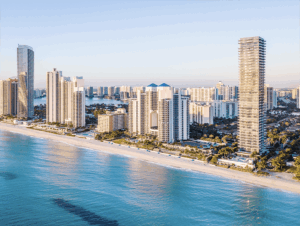The Digital-First Pioneer
Count Luca Faloni, the Turin-born entrepreneur behind the eponymous luxury brand Luca Faloni, is doubling down on his New York presence with a second location in the trendy Meatpacking District. The 3,500-square-foot store at 406 West 14th Street represents a significant evolution from the brand’s humble direct-to-consumer beginnings.
Faloni’s journey began in 2012 while working as a consultant for Bain & Co. in San Francisco, where he witnessed the rise of digital-native brands like Allbirds and Everlane. The lightbulb moment came when he realized he could apply the same direct-to-consumer model to Italian craftsmanship, making luxury menswear more accessible by cutting out traditional retail markups.
“We were online-only for five years, but the first store worked well, so we added others,” Faloni explains. The business remains 70% online, but the brand now operates 10 stores globally across London, New York, Milan, Paris, Miami, Munich, and Zurich.
The new Meatpacking location features premium Canaletto walnut and Carrara marble interiors, complete with a pool table, cinema nook, and bar—designed to encourage customers to linger. “We picked Meatpacking because it’s trendy with all the nightlife and the restaurants,” Faloni notes. “Footfall is very important for us.”
Unlike traditional Italian luxury houses such as Brunello Cucinelli or Zegna, Luca Faloni focuses exclusively on “elevated casualwear.” The brand breaks industry convention by offering a permanent collection of staples—including the signature linen Portofino shirt ($260), Elba polo ($225), and linen trousers ($360)—rather than seasonal collections.
The Traditional Powerhouse
Meanwhile, Boggi Milano is taking a more aggressive brick-and-mortar approach to its U.S. debut. The family-owned company, which operates 240 stores across 60 countries with annual revenue of $420 million, has opened three New York locations in rapid succession: a 5,920-square-foot flagship on Madison Avenue in April, a 1,800-square-foot SoHo store in February, and now a 4,735-square-foot, two-level store at The Shops at Columbus Circle.
“These openings aren’t just new stores—they represent a dream come true,” says Alessandro Cappelli, U.S. CEO of Boggi Milano. “We’re bringing a contemporary vision of Italian menswear to the U.S., built on quality, craftsmanship, and timeless style.”
The brand’s expansion strategy is notably ambitious. President, CEO, and Creative Director Claudio Zaccardi has outlined plans for stores in Miami, Chicago, Washington D.C., Boston, Houston, Dallas, Los Angeles, and San Francisco over the next five years. The company is also expanding its wholesale presence, starting with Bloomingdale’s flagship on 59th Street.
Boggi’s roots run deep in Italian fashion. The Zaccardi family’s apparel legacy began with Claudio’s grandfather, a childrenswear tailor in Monza. After taking over the family business in 1985, the brothers converted it into a luxury multibrand retailer called Brian & Barry. In 2003, they acquired Boggi Milano for $14.6 million when it operated just 22 stores.
Different Strategies, Same Market
The contrasting approaches of these two Italian brands highlight different philosophies toward American expansion. Luca Faloni maintains its digital-first DNA while strategically adding experiential retail spaces in high-traffic locations. The brand targets the modern consumer who values quality and craftsmanship but prefers a more relaxed, contemporary aesthetic.
Boggi Milano, by contrast, is leveraging its traditional retail expertise and broader product range to establish a comprehensive U.S. presence quickly. With categories spanning Active, Casual, Formal, and Easy Formal, plus signature tailoring, the brand offers something for every occasion while emphasizing sustainability through organic fibers and recycled materials.
The Prize: America’s Menswear Market
Both brands recognize the strategic importance of the U.S. market. As Zaccardi puts it: “The U.S. is the most important country in the world and we believe that we are a global brand now, but you can’t really be a global brand if you’re not in the U.S.—especially for menswear.”
Faloni has found particular success in America, noting that the U.S. has become the company’s most successful market. Despite recent price increases due to tariffs and currency fluctuations, demand remains strong. “We were very well priced before and we still are, even though we had to pass some costs along to customers,” he explains.
Looking ahead, both brands have ambitious growth plans. Faloni envisions operating 200 to 300 stores globally over the coming decades, with New York potentially housing five to six locations across different neighborhoods. Madison Avenue sits high on his wish list as a potential third location.
For now, both brands are betting that American consumers are ready for a more nuanced relationship with Italian menswear—one that values craftsmanship and heritage but adapts to contemporary lifestyles and shopping behaviors. In a market long dominated by American casual wear and British tailoring traditions, these Italian newcomers are carving out distinctly modern niches that could reshape how Americans think about luxury menswear.



